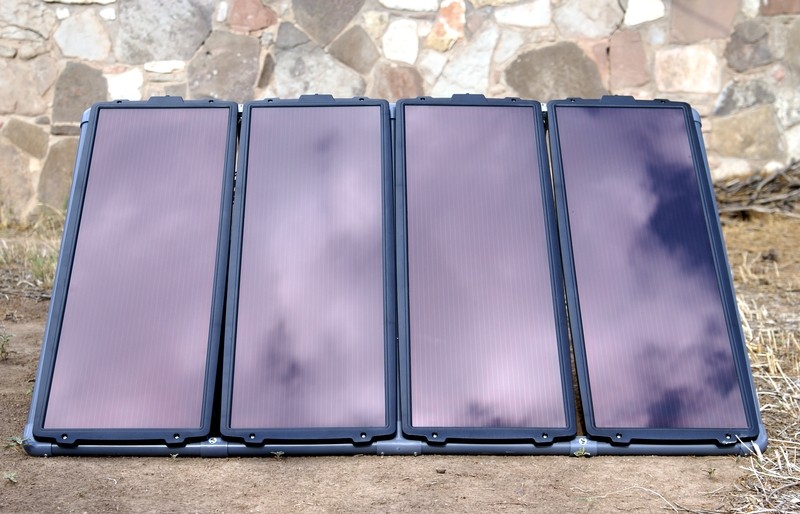In a survival situation, or even just on a routine camping expedition, it is nice to maintain some semblance of normalcy in your day to day life, like a small TV or refrigerator. This will improve your morale and likely will help everyone to withstand the situation much longer than if you were simply relying on rudimentary camping skills. So what do you need to consider for your solar generator purchase?
A portable solar emergency generator that can be rolled out and set up powering my refrigerator along with a few lights is a must. A solar emergency generator can also be used for a weekend camping trip allowing the guys to still catch the game on TV. During emergencies, having the ability to power up a laptop is a must. A Wi-Fi signal may be hard to come by, but a maintaining a sense of normalcy is important in these types of situations.
The first step in choosing emergency power generator is to decide if solar is right for you. There are obvious advantages of solar over fossil fuel the first of which without electricity, you are not going to have access to gas. An emergency solar generator will cost around 4X what a gasoline generator costs, but the confidence knowing you have unlimited power has to give you some piece of mind.
The more power you require to power the critical loads in your home in an emergency, the more solar panels and battery backup you are going to need. Of course, that means more money.
The size of an off-grid emergency solar power system depends on the amount of power that is required (watts), the amount of time appliances and lights are used (hours) and the amount of energy available from the sun (sun-hours per day). The owner has control of the first two variables as well as the position of the solar panels; the third depends on the location.
A cheap tool you can get to help you check your energy needs is a meter we use nearly every week sizing off-grid power is a “kill a watt meter”. These simple devices can be connected to your appliance, and it will assess how efficient they really are. Handy item to have when considering how much emergency solar power you will need.
The next step is to compare your critical power list to the total wattage of the emergency solar generator you are considering. It is a good idea to allow for some wiggle room in your calculations. Emergency solar generators are usually rated by their STC watt number. STC in an acronym for “Standard Test Conditions”.
Solar systems will produce lower outputs due to soiling, shading, module mismatch, wire losses, inverter and transformer losses, shortfalls in actual nameplate ratings, panel degradation over time, and high-temperature losses for arrays mounted close to or integrated within a roofline. These loss factors can vary by season, geographic location, mounting technique, azimuth, and array tilt.
There is clearly a bit of work to be done before making this decision. You need to consider your minimal needs and plan accordingly, allowing for a little bit of wiggle room. It's also important to note in the article that the efficiency of the solar panels will fall as time goes on, so this needs to have some bearing on your decision as well. A solar generator is a large purchase, but can be used for years and you will never run out of juice, unlike gasoline generators. It's a useful thing to have when planning for long-term survival off the grid.
This information is courtesy of Blue Pacific Solar ; read more about the issue and solar generators on the site.

Following